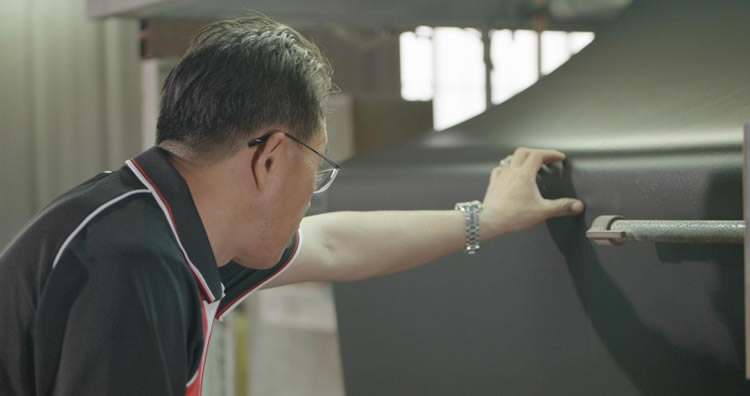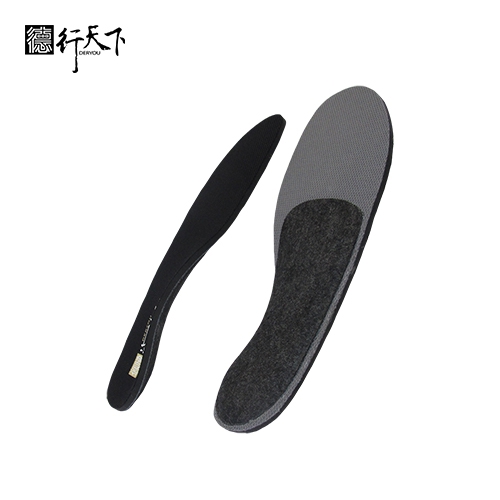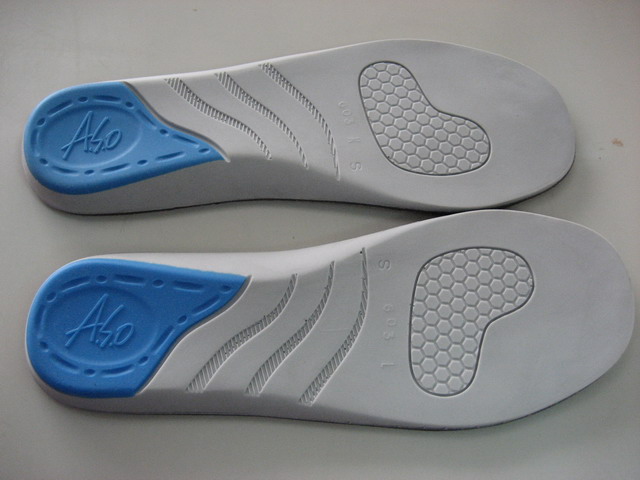Introduction – Company Background
GuangXin Industrial Co., Ltd. is a specialized manufacturer dedicated to the development and production of high-quality insoles.
With a strong foundation in material science and footwear ergonomics, we serve as a trusted partner for global brands seeking reliable insole solutions that combine comfort, functionality, and design.
With years of experience in insole production and OEM/ODM services, GuangXin has successfully supported a wide range of clients across various industries—including sportswear, health & wellness, orthopedic care, and daily footwear.
From initial prototyping to mass production, we provide comprehensive support tailored to each client’s market and application needs.
At GuangXin, we are committed to quality, innovation, and sustainable development. Every insole we produce reflects our dedication to precision craftsmanship, forward-thinking design, and ESG-driven practices.
By integrating eco-friendly materials, clean production processes, and responsible sourcing, we help our partners meet both market demand and environmental goals.


Core Strengths in Insole Manufacturing
At GuangXin Industrial, our core strength lies in our deep expertise and versatility in insole and pillow manufacturing. We specialize in working with a wide range of materials, including PU (polyurethane), natural latex, and advanced graphene composites, to develop insoles and pillows that meet diverse performance, comfort, and health-support needs.
Whether it's cushioning, support, breathability, or antibacterial function, we tailor material selection to the exact requirements of each project-whether for foot wellness or ergonomic sleep products.
We provide end-to-end manufacturing capabilities under one roof—covering every stage from material sourcing and foaming, to precision molding, lamination, cutting, sewing, and strict quality control. This full-process control not only ensures product consistency and durability, but also allows for faster lead times and better customization flexibility.
With our flexible production capacity, we accommodate both small batch custom orders and high-volume mass production with equal efficiency. Whether you're a startup launching your first insole or pillow line, or a global brand scaling up to meet market demand, GuangXin is equipped to deliver reliable OEM/ODM solutions that grow with your business.



Customization & OEM/ODM Flexibility
GuangXin offers exceptional flexibility in customization and OEM/ODM services, empowering our partners to create insole products that truly align with their brand identity and target market. We develop insoles tailored to specific foot shapes, end-user needs, and regional market preferences, ensuring optimal fit and functionality.
Our team supports comprehensive branding solutions, including logo printing, custom packaging, and product integration support for marketing campaigns. Whether you're launching a new product line or upgrading an existing one, we help your vision come to life with attention to detail and consistent brand presentation.
With fast prototyping services and efficient lead times, GuangXin helps reduce your time-to-market and respond quickly to evolving trends or seasonal demands. From concept to final production, we offer agile support that keeps you ahead of the competition.
Quality Assurance & Certifications
Quality is at the heart of everything we do. GuangXin implements a rigorous quality control system at every stage of production—ensuring that each insole meets the highest standards of consistency, comfort, and durability.
We provide a variety of in-house and third-party testing options, including antibacterial performance, odor control, durability testing, and eco-safety verification, to meet the specific needs of our clients and markets.
Our products are fully compliant with international safety and environmental standards, such as REACH, RoHS, and other applicable export regulations. This ensures seamless entry into global markets while supporting your ESG and product safety commitments.
ESG-Oriented Sustainable Production
At GuangXin Industrial, we are committed to integrating ESG (Environmental, Social, and Governance) values into every step of our manufacturing process. We actively pursue eco-conscious practices by utilizing eco-friendly materials and adopting low-carbon production methods to reduce environmental impact.
To support circular economy goals, we offer recycled and upcycled material options, including innovative applications such as recycled glass and repurposed LCD panel glass. These materials are processed using advanced techniques to retain performance while reducing waste—contributing to a more sustainable supply chain.
We also work closely with our partners to support their ESG compliance and sustainability reporting needs, providing documentation, traceability, and material data upon request. Whether you're aiming to meet corporate sustainability targets or align with global green regulations, GuangXin is your trusted manufacturing ally in building a better, greener future.
Let’s Build Your Next Insole Success Together
Looking for a reliable insole manufacturing partner that understands customization, quality, and flexibility? GuangXin Industrial Co., Ltd. specializes in high-performance insole production, offering tailored solutions for brands across the globe. Whether you're launching a new insole collection or expanding your existing product line, we provide OEM/ODM services built around your unique design and performance goals.
From small-batch custom orders to full-scale mass production, our flexible insole manufacturing capabilities adapt to your business needs. With expertise in PU, latex, and graphene insole materials, we turn ideas into functional, comfortable, and market-ready insoles that deliver value.
Contact us today to discuss your next insole project. Let GuangXin help you create custom insoles that stand out, perform better, and reflect your brand’s commitment to comfort, quality, and sustainability.
🔗 Learn more or get in touch:
🌐 Website: https://www.deryou-tw.com/
📧 Email: shela.a9119@msa.hinet.net
📘 Facebook: facebook.com/deryou.tw
📷 Instagram: instagram.com/deryou.tw
Custom foam pillow OEM in Taiwan
Are you looking for a trusted and experienced manufacturing partner that can bring your comfort-focused product ideas to life? GuangXin Industrial Co., Ltd. is your ideal OEM/ODM supplier, specializing in insole production, pillow manufacturing, and advanced graphene product design.
With decades of experience in insole OEM/ODM, we provide full-service manufacturing—from PU and latex to cutting-edge graphene-infused insoles—customized to meet your performance, support, and breathability requirements. Our production process is vertically integrated, covering everything from material sourcing and foaming to molding, cutting, and strict quality control.ODM pillow factory in Thailand
Beyond insoles, GuangXin also offers pillow OEM/ODM services with a focus on ergonomic comfort and functional innovation. Whether you need memory foam, latex, or smart material integration for neck and sleep support, we deliver tailor-made solutions that reflect your brand’s values.
We are especially proud to lead the way in ESG-driven insole development. Through the use of recycled materials—such as repurposed LCD glass—and low-carbon production processes, we help our partners meet sustainability goals without compromising product quality. Our ESG insole solutions are designed not only for comfort but also for compliance with global environmental standards.Thailand insole OEM manufacturer
At GuangXin, we don’t just manufacture products—we create long-term value for your brand. Whether you're developing your first product line or scaling up globally, our flexible production capabilities and collaborative approach will help you go further, faster.Taiwan ODM expert for comfort products
📩 Contact us today to learn how our insole OEM, pillow ODM, and graphene product design services can elevate your product offering—while aligning with the sustainability expectations of modern consumers.Graphene-infused pillow ODM Indonesia
Research involving over 114,000 women revealed that a variant in the SYCE2 gene, affecting chromosome recombination, increases miscarriage risk by 22%, underscoring the complex genetic factors involved in pregnancy loss. A significant study identifies a genetic variant in the SYCE2 gene that heightens the risk of miscarriage by 22%, shedding light on the genetic causes of pregnancy loss. Scientists at deCODE genetics, a subsidiary of Amgen and their collaborators from Iceland, Denmark, and the USA published a study today in Nature Structural and Molecular Biology titled “Variant in the synaptonemal complex protein SYCE2 associates with pregnancy loss through effects on recombination.” While it is well established that chromosomal abnormalities are a major cause of miscarriages the biology behind pregnancy losses with or without chromosomal errors is not well understood. Over 114 thousand women from Iceland, Denmark, UK, USA, and Finland who have experienced pregnancy loss participated in a genome-wide association study, testing 50 million sequence variants. A low frequency missense variant in the SYCE2 gene was found to increase the risk of pregnancy loss by 22%. In a previous report by deCODE scientists this missense variant was shown to associate with recombination phenotypes in chromosomes that were transmitted from the mother. Recombination between homologous chromosomes is an essential part of meiosis, the generation of the human egg and sperm cell. The product of SYCE2 forms a part of a protein complex that is essential for the alignment of homologous chromosomes for recombination and the missense variant associating with pregnancy loss and recombination is predicted to affect the stability of this protein complex. Kari Stefansson CEO of deCODE genetics and Valgerdur Steinthorsdottir scientist at deCODE genetics and author of the paper, Variant in the synaptonemal complex protein SYCE2 associates with pregnancy loss through effects on recombination. Credit: deCODE genetics A closer inspection of the effect of the variant on recombination revealed an effect on positioning of crossovers that is proportional to the length of the chromosomes, the longer the chromosome the larger the effect. The effect on recombination is measured in live born individuals. The authors propose that this effect may be more extreme in pregnancies that are lost and may contribute to the pregnancy loss. The association with pregnancy loss does not account for embryos lost in early gestation before pregnancy has been detected so the effect of the variant on pregnancy success may be underestimated. The findings reported in this study demonstrate that a variant with a substantial effect on recombinations can be maintained in the population despite increasing the risk of pregnancy loss. Reference: “Variant in the synaptonemal complex protein SYCE2 associates with pregnancy loss through effect on recombination” by Valgerdur Steinthorsdottir, Bjarni V. Halldorsson, Hakon Jonsson, Gunnar Palsson, Asmundur Oddsson, David Westergaard, Gudny A. Arnadottir, Lilja Stefansdottir, Karina Banasik, M. Sean Esplin, Thomas Folkmann Hansen, Søren Brunak, Mette Nyegaard, Sisse Rye Ostrowski, Ole Birger Vesterager Pedersen, Christian Erikstrup, DBDS genomics consortium, Gudmar Thorleifsson, Lincoln D. Nadauld, Asgeir Haraldsson, Thora Steingrimsdottir, Laufey Tryggvadottir, Ingileif Jonsdottir, Daniel F. Gudbjartsson, Eva R. Hoffmann, Patrick Sulem, Hilma Holm, Henriette Svarre Nielsen and Kari Stefansson, 29 January 2024, Nature Structural & Molecular Biology. DOI: 10.1038/s41594-023-01209-y
Scientists have discovered that the periaqueductal gray (PAG) area in a rat’s brain is crucial for play and laughter, with both tickling and play triggering strong neural responses. If the PAG is inhibited or the rats are in an anxiety-provoking environment, they play less and their laughter diminishes, suggesting that play is a more instinctual behavior and the PAG controls this process. Scientists have identified a key brain structure responsible for play and laughter in rats, revealing that the periaqueductal gray (PAG) is essential for playful behavior. The study highlights the instinctual nature of play and suggests that it serves a critical role in brain development. In order to examine play behaviors in animals like rats, scientists are required to be able to authentically simulate play-conducive environments in the laboratory. If rats feel anxious or restrained, they are less likely to engage in play, and very little information exists regarding the brain activity of freely playing rats. After getting rats comfortable with a human playmate, tickling them under controlled conditions, then measuring the rats’ squeaks and brain activity, a research team reports on July 27 in the journal Neuron that a structure in rat brains called the periaqueductal gray is essential for play and laughter. “We know that vocalizations such as laughter are very important in play, which supported the idea that there is some sort of organization signal in the brain regulating this behavior,” says senior author Michael Brecht, a neuroscientist at the Humboldt-Universität zu Berlin. “For example, children check for laughter when they play-fight with each other. If their playmate isn’t laughing anymore, they stop fighting.” Researchers play with rats. Credit: Natalie Gloveli Play is one of the least understood types of behavior, and scientists currently do not know the neural pathways that control the playfulness of humans or other animals. To learn more about the neuroscience of play, these researchers first ensured that the rats they studied were free to move around throughout the experiment. In addition, they gave the rats a few days to get accustomed to their new environment. Once the rats were comfortable, the researchers played games of “chase the hand” with them and tickled the rats on their backs and bellies. Rats don’t laugh the way humans do, but when amused, they do squeak at a high-pitched tone that humans cannot hear. The researchers monitored this sound to ensure that the rats were having fun. Graphical Abstract. Credit: Neuron Gloveli et al. Neural Activity in the PAG Governs Play Behavior When looking at these animals’ brain activity, the researchers found strong neural responses to both tickling and playing in the lateral column of the periaqueductal gray, or PAG. If this part of the brain was inhibited, the rats stopped engaging in play as much and did not laugh as frequently. On the other hand, if the rats were put in an unfamiliar environment that was designed to provoke anxiety, they also stopped laughing, and the tickling- and play-responsive cells in the lateral column of the PAG decreased their activity. The PAG is located in the midbrain, and it has been known in the past to control vocalizations and the fight-or-flight response. Play-fighting can also invoke a fight-or-flight response, which might be one explanation for the PAG’s role in play. Prior research has shown that playfulness persists even if the cortex, which controls consciousness, fails to develop, which suggests that play is a more instinctual behavior. The Evolutionary Significance of Playfulness “A lot of people think that play is childish or not a very decisive behavior, but play is underrated,” says Brecht. “In my perception of play, it’s a self-training behavior. Usually, brains serve for controlling behaviors. Play behaviors, however, seem to serve for growing brains.” Next, the researchers plan on seeing if they observe similar activity in the lateral column of other animals when they are being played with, which could allow them to compare the playfulness of different species. They also plan to see if giving younger rats different play habits might change the way that the lateral column of the PAG develops. Reference: “Play and tickling responses map to the lateral columns of the rat periaqueductal gray” by Natalie Gloveli, Jean Simonnet, Wei Tang, Miguel Concha-Miranda, Eduard Maier, Anton Dvorzhak, Dietmar Schmitz and Michael Brecht, 28 July 2023, Neuron. DOI: 10.1016/j.neuron.2023.06.018 The study was funded by the Humboldt-Universität zu Berlin, the Bernstein Center for Computational Neuroscience Berlin, NeuroCure Cluster of Excellence, Einstein Center for Neurosciences Berlin, Deutsche Forschungsgemeinschaft, European Research Council.
Camera trap image of a chimpanzee feeding on orange fruit behind someone’s house in Caiquene village. Credit: E Bersacola and Kim Hockings / Cantanhez Chimpanzee Project Chimpanzees and humans “overlap” in their use of forests and even villages, new research shows. Scientists used camera traps to track the movements of western chimpanzees — a critically endangered species — in Guinea-Bissau. Chimpanzees used areas away from villages and agriculture more intensively, but entered land used by humans to get fruit — especially when wild fruits were scarce. Researchers from the University of Exeter and Oxford Brookes University say the approach used in this study could help to inform a “coexistence strategy” for chimpanzees and humans. “Understanding how wildlife balance the risks and rewards of entering environments used by humans is crucial to developing strategies to reduce risks of negative interactions, including disease transmission and aggression by animals or humans,” said lead author Dr. Elena Bersacola, of the Centre for Ecology and Conservation on Exeter’s Penryn Campus in Cornwall. “Using 12 months of data from 21 camera traps, our study produced hotspot maps that show how humans and chimpanzees overlap in their use of forests, villages and cultivated areas.” An adult male chimpanzee crossing a road. Credit: Kimberley Hockings Food Scarcity Drives Risk-Taking Behavior Chimpanzee use of space was linked to the availability of naturalized oil-palm fruit, and the study also shows that chimpanzees access high-risk orange, lime, and papaya fruits in response to nutritional necessity rather than preference alone. The study used a “landscape of fear” framework, based on the idea that animals learn about risks and the resulting fear shapes their decisions over where and when to feed, travel, and rest. Researchers are increasingly incorporating humans as agents for shaping the wildlife’s landscapes of fear. The team in this study were cautious not to let the chimpanzees become “habituated” (used to humans, and therefore not fearful). “Elena got around this problem by setting up a patchwork of camera traps throughout one chimpanzee community’s home range and monitoring their use of space,” said Dr. Kimberley Hockings, of the University of Exeter. “The methods and analyses Elena used are new and exciting and have helped us understand human-chimpanzee coexistence across the landscape. “This is important because western chimpanzees are critically endangered and these shared landscapes are crucial for their persistence. “These methods can also be applied to other threatened wildlife that are being pushed into ever-increasing human-impacted landscapes across the globe.” Professor Catherine Hill, of Oxford Brookes University, said: “Our modeling approach generates fine-resolution space-time output maps, which can be scaled-up to identify human-wildlife interaction hotspots. “Our method provides the necessary tools to understand and more effectively manage human-wildlife coexistence at different spatial scales, including the management of resources important to both.” Reference: “Chimpanzees balance resources and risk in an anthropogenic landscape of fear” by Elena Bersacola, Catherine M. Hill and Kimberley J. Hockings, 25 February 2021, Scientific Reports. DOI: 10.1038/s41598-021-83852-3
DVDV1551RTWW78V
Thailand pillow ODM development service 》where craftsmanship meets innovation and ESG valuesODM service for ergonomic pillows Indonesia 》a manufacturing partner you can rely on for quality and deliveryTaiwan pillow OEM manufacturer 》empowering smart brands through better materials and process
限會員,要發表迴響,請先登入


